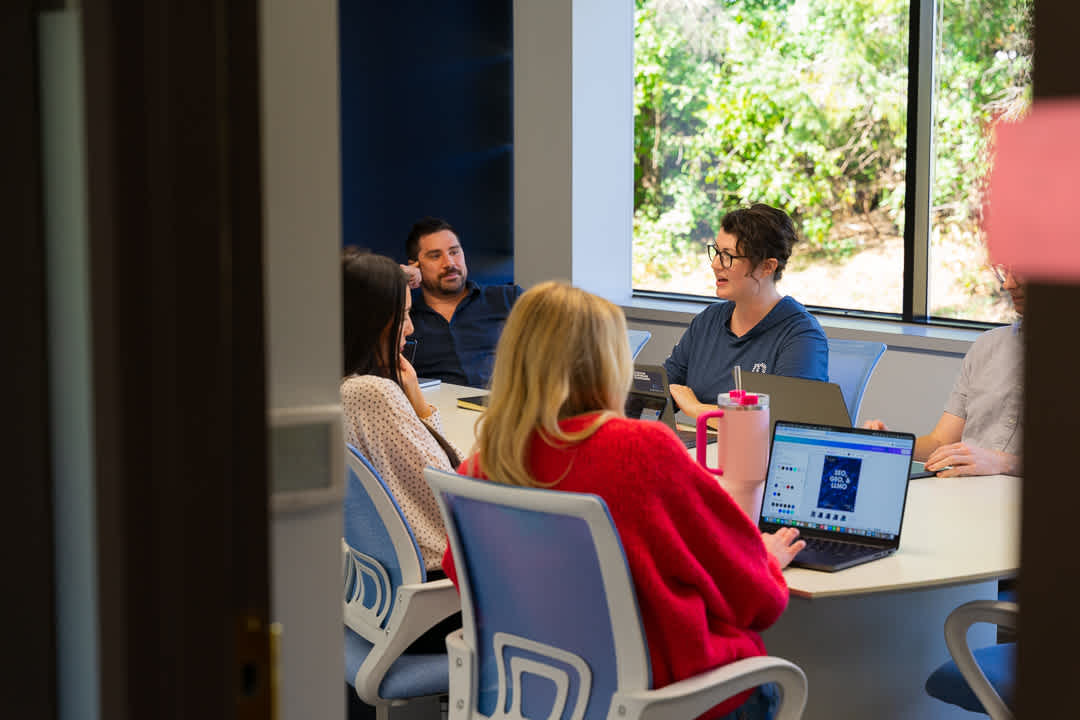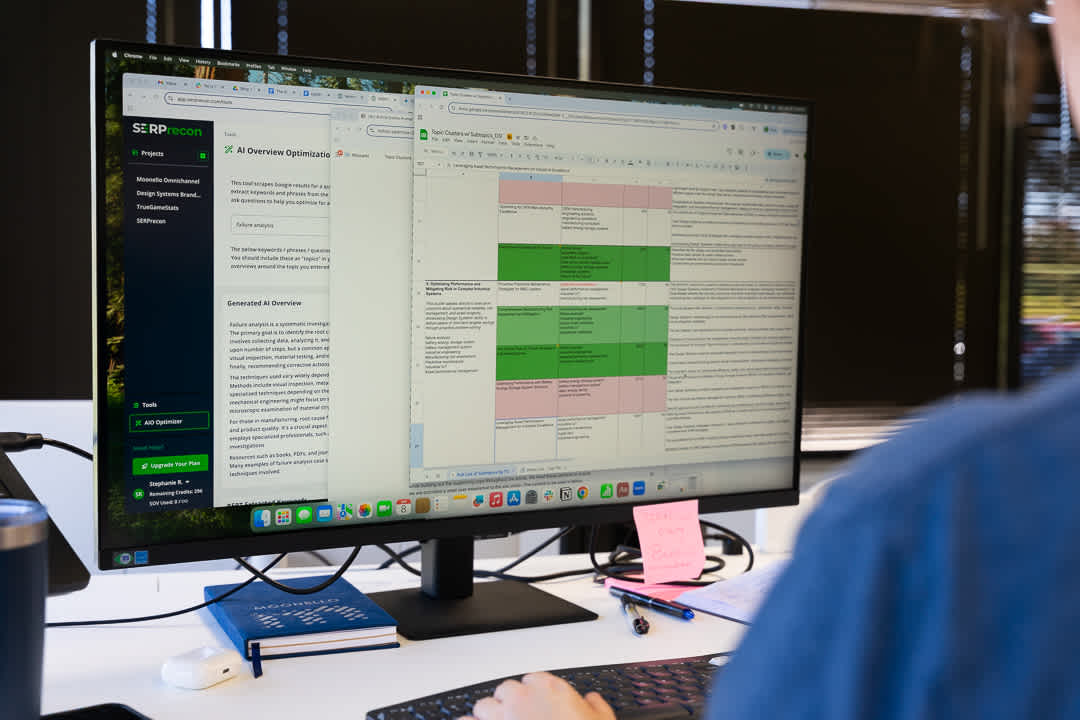Gamification Benefits in Software: Enhancing User Engagement and Retention
April 19, 2023
Gamification involves using game elements to increase engagement in non-game settings. It can boost focus, productivity, and overall user satisfaction within software and business processes. Gamification finds success in areas like employee training, customer loyalty, and education, with companies like Treehouse and McDonald's demonstrating its effectiveness. Additionally, specialized gamification software offers advantages like customizable experiences, analytics, and social media integration.
Ever struggled to keep users engaged with your software product? Gamification might be the solution you've been looking for. It's the strategic use of game mechanics – like points, badges, and leaderboards – in non-game settings. Think of it as injecting the fun and motivating aspects of games into your software to drive user engagement and desired behaviors.
This approach taps into our natural desire for competition, achievement, and social interaction. By incorporating these elements, businesses can transform their software products from tasks to engaging experiences, ultimately boosting user retention.
In this article, we'll explore the benefits of gamification for software products. We'll look at key features of gamification software, showcase successful real-world examples, and even peek into the future of game-based learning. Get ready to discover how gamification can take your software products to the next level!
Struggling to keep users hooked on your software? Contact Moonello for customized gamification solutions that drive engagement and results.
Types of Gamification Software: Your Toolkit for Engagement
Gamification software isn't one-size-fits-all. It comes in different varieties designed to tackle specific challenges and create exciting experiences:
Employee Engagement: Gamification software can transform work routines into engaging missions. It rewards employees for completing tasks, tracks their progress, and even encourages friendly competition through leaderboards. The result? A team that's energized, motivated, and eager to succeed.
Customer Loyalty Programs: These programs use gamification to turn ordinary shopping experiences into thrilling treasure hunts. Customers earn points for purchases, reviews, or referrals, unlocking badges, levels, and exciting rewards. This approach builds brand loyalty and keeps customers coming back for more.
Sales Enablement: Gamification software turns the sales process into a competitive challenge. Sales reps earn points and rewards for hitting targets and completing training. Leaderboards spark friendly rivalry and create a culture of achievement, driving better results.
Education and Training: Learning doesn't have to feel like a slog. Gamification software injects fun into education by turning lessons into mini-games. Students progress through levels, earn badges for mastery, and feel motivated to engage deeply with the material.
The Secret Sauce: Features that Drive Success
Think of these features as the power-ups that make gamification software such an effective tool:
Point Systems: Points are the currency of achievement. They're earned for everything from completing tasks to demonstrating specific behaviors. Points can lead to tangible rewards or a higher ranking on the leaderboard.
Leaderboards: Leaderboards fuel a spirit of healthy competition and push individuals to strive for their best. Seeing your colleagues' achievements can be that extra push needed to up your game.
Badges and Rewards: Badges are virtual trophies that mark milestones and recognize accomplishments. Rewards add an extra layer of excitement and can range from small perks to serious prizes.
Challenges and Quests: Break down larger goals into smaller, achievable challenges or create multi-step quests for sustained engagement. This keeps the experience fresh and dynamic.
Progress Tracking: Visualized progress is a powerful motivator. Gamification software lets users see their earned points, collected badges, and overall progression, creating a sense of accomplishment.
Customization and Personalization: Flexible gamification software allows you to tailor the experience to your specific audience and goals. Customize challenges, rewards, and the overall theme to create a sense of ownership and investment.
Analytics and Reporting: Measure your success and fine-tune your gamification strategy with robust data and analytics. Understand what works best, identify areas for improvement, and demonstrate the return on investment.
Benefits Across Industries
Gamification has the power to transform the way we work, learn, and even manage our health. Let's explore its advantages in different sectors:
Business:
Motivation Boost: Gamification turns work into an engaging experience. Employees earn rewards, feel a sense of progress, and stay motivated, which naturally leads to increased productivity.
Sales Success: Sales teams thrive on competition and recognition. Gamification adds points, leaderboards, and incentives, motivating them to excel and consistently surpass their targets.
Loyal Customers: Gamified loyalty programs turn ordinary customers into brand champions. By offering rewards, surprises, and a sense of achievement, businesses build long-lasting customer relationships.
Education:
Student Engagement: Learning becomes an adventure when you add points, levels, and badges. Students are more motivated, participate actively, and find the whole process more enjoyable.
Better Learning: Gamification doesn't just boost enthusiasm; it helps students understand and retain information better. This translates to demonstrably improved learning outcomes.
Fun and Excitement: Forget boring lectures! Gamified lessons involve challenges, rewards, and a sense of progress, making learning an exciting and fulfilling experience.
Health and Wellness:
Healthy Habits: Gamification makes forming healthy habits less daunting. Earning points and rewards for positive actions provides continued motivation for lasting change.
Fitness Goals: Many fitness apps rely on gamification to keep users on track. Points for workouts, competitions, and progress visualization make exercise feel rewarding and sustainable.
Behavior Change: Whether it's weight loss or smoking cessation, gamification can be the key to success. Achievable goals, tangible rewards, and a supportive community create a powerful framework for long-term behavior change.
Choosing the Right Gamification Software
Finding the perfect gamification software is crucial to achieving your goals. Here are the key factors to consider:
Target audience and goals: Who are you trying to motivate and what do you want to achieve? Is your audience employees, customers, students, or patients? Understanding their needs and your specific goals is essential for choosing the right software solution.
Desired features: Which gamification features are essential? Consider the importance of points, badges, leaderboards, challenges, progress tracking, customization, and analytics when weighing your options.
Ease of use: The software should be intuitive and easy for both administrators and users. A complicated interface can hinder adoption and success.
Integration with existing systems: Can the software seamlessly integrate with your current tools and technology (like your CRM or learning management system)? This is crucial for a streamlined workflow.
Budget and pricing: Gamification software can range in price. Find a solution that balances your desired features with affordability. Consider both one-time and subscription-based costs.
Real-World Examples
Gamification isn't hidden in some secret tech lab – it's out there! You've probably earned rewards at your local coffee shop or competed with colleagues without even realizing it. Let's uncover some real-world examples that show how gamification is everywhere, from McDonald's to Cisco.
Monopoly Game By McDonald's
McDonald's Monopoly game is a prime example of a successful customer engagement campaign that utilizes gamification techniques to drive customer loyalty and repeat business. The Monopoly game encourages customers to collect game pieces by purchasing McDonald's products, with the ultimate goal of completing a Monopoly board and winning various prizes.
This strategy customers gamification not only incentivizes customers to make more frequent purchases but also creates an enjoyable and engaging experience that fosters brand loyalty. The McDonald's Monopoly game has become a highly anticipated annual event, showcasing the power of gamification in driving customer engagement and repeat business.
Cisco's Social Media Training Program
Cisco, a global leader in networking technology, employs gamification in its social media training program to teach employees about social media best practices and strategies. By incorporating game elements like points, badges, and levels, Cisco' gamification program creates an engaging and interactive learning experience that motivates employees to actively participate in the training program. As a result, Cisco has successfully improved its social media presence and customer engagement, highlighting the benefits of gamification in employee training and development.
The Future of Gamification
Gamification is still in its early stages, and with rapid advancements in technology, it's poised to become more immersive, personalized, and impactful than ever before.
Trends to Watch
Virtual Reality (VR) and Augmented Reality (AR): Imagine training simulations where you physically interact within a gamified environment (VR) or completing real-world tasks enhanced with gamified elements overlaid on your surroundings (AR). VR and AR offer the potential to create incredibly engaging and realistic experiences.
Artificial Intelligence (AI): AI is set to revolutionize gamification with adaptive challenges that automatically adjust to individual skill levels and preferences. It can also analyze user data in real-time, providing personalized feedback and tailored rewards to maximize engagement.
Hyper-Personalization: Gamification will move beyond generic rewards and challenges. Advanced data analytics and AI will enable systems to understand individual motivators and tailor experiences accordingly, leading to much higher levels of engagement.
Integration into the Internet of Things (IoT): Gamification could be integrated with everyday objects and environments through the IoT. Imagine your fridge giving you points for healthy choices or your office space turning routine tasks into quests!
Potential: The Power to Transform
Gamification has the potential to redefine the way we work, learn, and interact with the world:
Business: Gamification will shape the future of workplaces. Expect more engaging employee training programs, dynamic sales environments driven by real-time feedback, and even gamified recruitment processes with AI analyzing candidate performance.
Education: The classroom could become a giant game! VR simulations transporting students through historical events, AR experiences turning science lessons into adventures, and AI-powered tutors providing adaptive support will transform learning.
Healthcare: From fitness challenges and gamified therapy programs to AI-assisted behavioral nudges for healthier habits, gamification will contribute to improved patient outcomes and overall well-being.
Society at Large: Could gamification tackle social and environmental problems? Imagine earning rewards for recycling, being matched to volunteer opportunities based on your interests, or seeing energy conservation turn into a community-wide game.
The future of gamification is bright, and its impact will reach far beyond what we see today. Get ready for a world where achievements, learning, and even everyday tasks become more engaging, rewarding, and fun!
Conclusion
In a world battling for attention, gamification software provides the key to unlocking lasting engagement. Its ability to make processes more rewarding, motivating, and personalized holds the power to revolutionize industries. If you're ready to see increased productivity, better learning outcomes, or stronger customer loyalty, it's time to embrace the gamification revolution.
Don't miss out on this game-changing opportunity - contact us today!
Key Takeaways
Gamification is Versatile: It's not just for video games! Gamification software can be effectively applied across industries, from businesses and education to healthcare and even personal growth.
Features Drive Impact: The power of gamification lies in elements like points, badges, leaderboards, challenges, and customization. Understanding these features is key to designing successful gamification strategies.
Consider Your Audience: Gamification isn't one-size-fits-all. Tailoring the experience to your specific audience (employees, customers, students, etc.) and their goals is crucial for success.
The Future is Bright: Gamification is still evolving. Integration with technologies like VR, AR, and AI will usher in a new era of immersive, personalized, and transformative gamified experiences.
Engagement is Key: At its core, gamification software is a powerful tool to drive engagement. Whether the goal is increased productivity, improved learning outcomes, or healthier behaviors, tapping into the psychology of play can make a profound difference.



